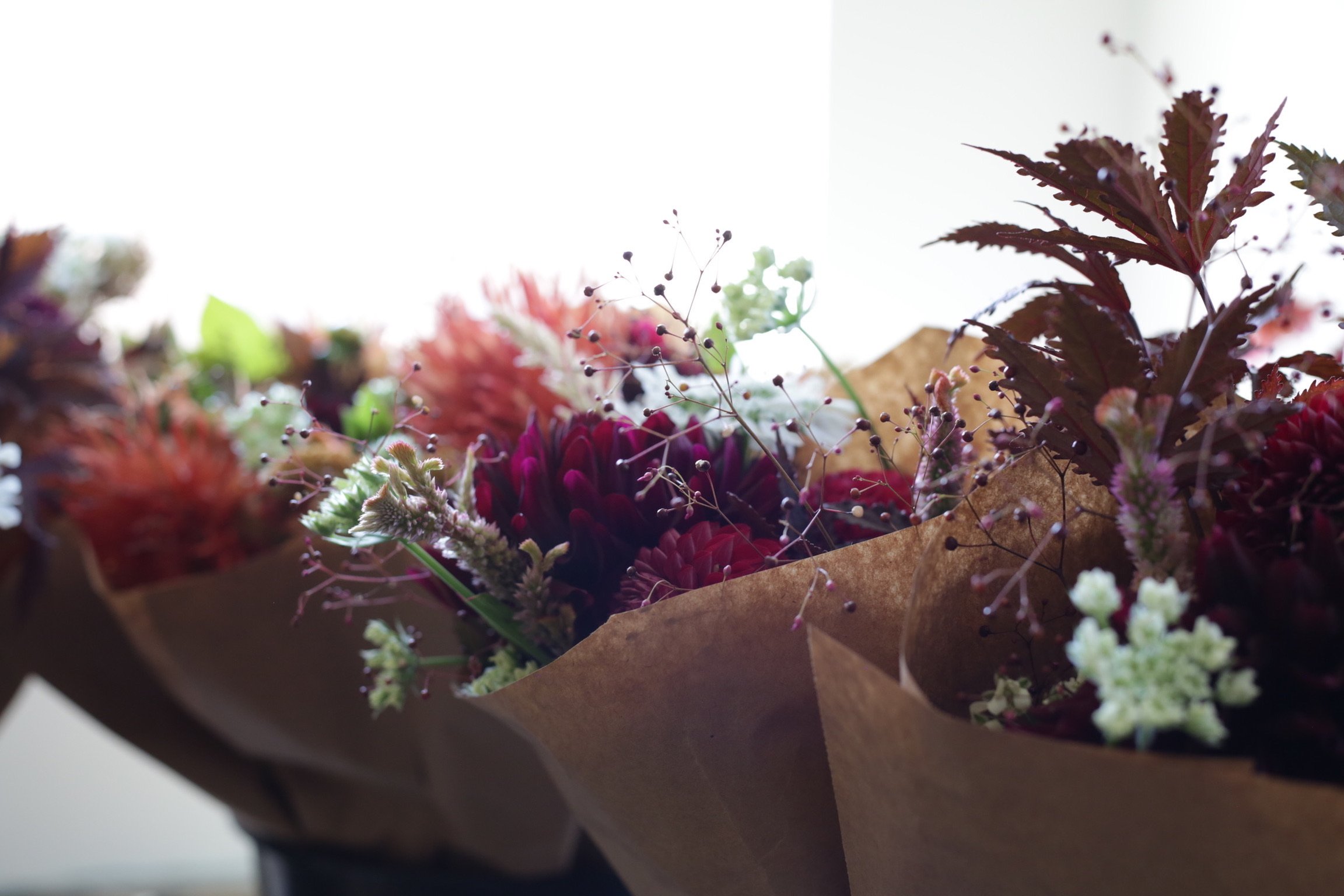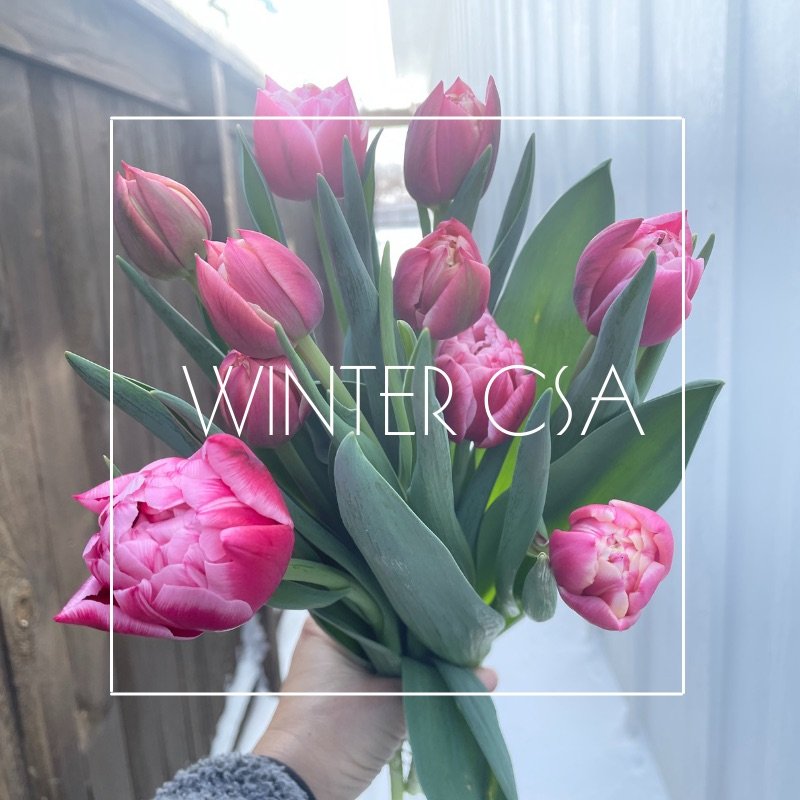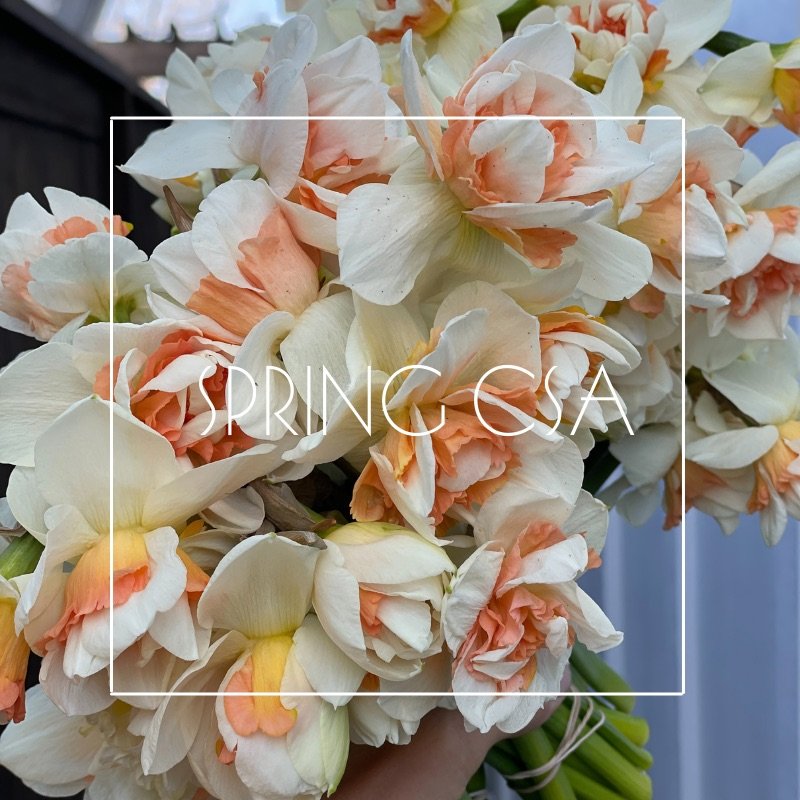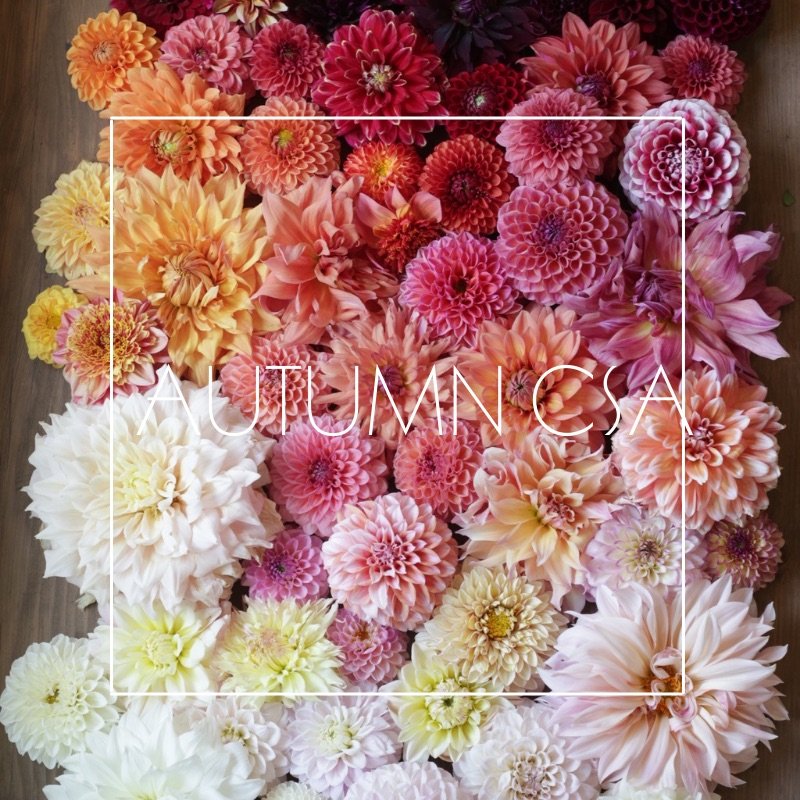5 Benefits of Offering a Flower CSA
Are you a flower grower or flower farmer wondering if offering a flower CSA is for you?
Community Supported Agriculture (CSA) is a concept developed by Rudolf Steiner in the early 1900s as a way for society to work collaboratively with local agriculture producers. It can be a great way to earn regular farm income and reduce the risk associated with farming.
Here’s How a Flower CSA Works
The idea behind a CSA strives to weave farmers, distribution channels, and citizens together in a collective effort where every group has a responsibility and risk associated with the work of bringing sustainable agriculture products into the world.
In a CSA, farmers presell their harvest to members of the community.
The risk here is when the harvest is good and plentiful, everyone wins, but if the harvest is poor due to uncontrollable forces in nature, everyone suffers the yield loss—not just the farmer. This is the collaborative nature of CSAs.
You presell a share of your harvest upfront when you offer a CSA.
You'll commonly see this offered by vegetable farmers where they sell 20 weeks of vegetables, and customers go to their farm each week to pick up a box of mixed vegetables.
You can take this model and re-envision it for flowers by offering a set number of weeks of market bouquets throughout the season.
5 Benefits of Offering a Flower CSA
Here are the five core benefits of offering a flower CSA as a flower grower.
It builds community.
It offers cash flow in the off-season.
It gives greater security to the grower.
You can have higher margins.
You’ll experience less waste.
Let’s dig into each of these benefits below.
Builds Community
People want to know their farmers now more than ever. They want to know the story of your farm, connect with a real person, and support local businesses.
With a flower CSA, customers prepay for an entire season of flowers, then come to the farm and pick up a weekly market bouquet. This is a wonderful way to expose community members to the real world of agriculture—the ups and downs, the seasonality, and the beauty.
For the health of sustainable agriculture worldwide, communities need to have a direct relationship with local farms. The word culture is a very important part of the word agriculture. CSA members become not only customers but friends. You get an opportunity to learn their stories, hear about the flowers they love, and hear how your farm has impacted their lives.
The warmth and appreciation you receive on CSA pick-up days is palatable. After a long week in the fields or delivering massive amounts of flowers for wholesale, building community is food for the soul. Not to mention leaving the weekends free of farmers’ markets gives you a healthy break over the weekend so you can build a sustainable business you love.
Cash Flow in the Off-Season
At the beginning of the season, when you have significant expenses—seeds, supplies, and labor—pre-selling a flower CSA in January can bring cash flowing into your bank account to pay for expenses at a time when no flowers are growing.
You can turn dormant months into your biggest cash months, getting your season off to a healthy financial start and allowing you to buy the equipment and tools needed to have your best season.
As a flower farmer, offering a floral CSA will give you consistency in sales—even through pandemics!
Consistency & Greater Security
Flower CSAs offer consistency in sales, providing greater security for the business.
It’s reassuring to know that you have a committed sales outlet every week when the flowers are blooming. The best peace of mind comes from knowing that your perishable products have a home after all the hard work of growing flowers. There’s relief in knowing you’re cutting for the sale vs. cutting flowers and hoping to sell them through a farmers' market or wholesale distribution channel.
During Covid, many flower farmers who relied heavily on weddings, events, or wholesale, had to pivot their business models quickly. Building in diverse sales channels upfront allows you greater flexibility and security in your revenue channels, so you have the knowledge and processes in place to shift accordingly no matter what type of market it is.
Higher Margins
Selling directly to consumers has a higher margin than making market bouquets and selling them wholesale.
While there are benefits to selling market bouquets wholesale (ex., grocery outlets), it generally requires more flowers than most small to medium-sized growers can produce.
Growing a healthy CSA could be a way to slowly walk into a larger account, giving you time to build sufficient processes and build demand. But if your farm is small, then keeping direct contact with CSA members gives you a reliable revenue channel, builds a repeat customer list, and sells your products at a higher margin.
Selling flowers to event designers often leaves you to the mercy of the current trends and very specific color palettes. CSA’s, on the other hand, can use all of your blooms in colorful palettes loved by your clients!
Less Waste
One of the most significant challenges in growing and selling flowers for events and weddings is you are at the mercy of fashion trends and extremely particular color palettes.
You may plant a flower thinking it will be a soft peachy tone, but it is a completely different shade than you expected when it blooms. This may make it unusable for weddings, but it could still be a wonderful color for a CSA Bouquet.
CSA members are less picky about color palettes and generally love brighter colors. By having different sales outlets, you ensure that all flowers are being used during different times of the week. Nothing goes uncut or to the compost pile because it wasn't the right shade of peach.
If you are a new farmer-florist, start out with a simple 6-week summer CSA when you are confident you will have flowers available.
As your confidence grows and your farm matures, you can expand into other seasons. Perhaps consider a 6-week winter CSA in February and March highlighting indoor-grown tulips. Or a spring CSA in April and May highlighting Dutch Narcissus, tulips, bearded iris, fritillaria, muscari, and flowering branches.
Maybe a summer CSA in June & July with peonies, ranunculus, anemones, snapdragons, delphinium, lavender, or herbs is more your style. Or finally, an autumn CSA in August & September highlights warm-season flowers like dahlias, sunflowers, marigolds, amaranth, cosmos, zinnias, and more.
Offering a flower CSA can bring many benefits to your business and creates a sense of place and time in a world where most things can be bought with the click of a button. Create a flower CSA that makes sense for your farm, your community, and your life.













